Make a simple “trap” out of recycled materials to gently catch and observe insects!Created by Tracy Gordon, RHA Educator.
Level: Any age
Duration:Less than an hour to prepare/Many hours of observations
Setting: Back or front yard
Background Information: When I tell people that I like to catch insects they may have an image of me chasing after butterflies with a net. Truth is I sometimes use other methods to catch and observe insects and other invertebrates. One such method I like to use is a pitfall trap.
Pitfall traps are a great way to capture insects that spend most of their time crawling around on the ground. Did you know that there are over 2000 species of ground beetles that can be found in North America? A few that you may have seen include rove beetles, click beetles, darkling beetles, and scarab beetles. Other crawling invertebrates that you may be lucky enough to capture are centipedes, snails, sow bugs, ants, earwigs and spiders.
Professional entomologists often use pitfall traps in their research. There are a lot of resources that entomologists have created to help you identify what kinds of invertebrates you’ve captured.
Bug Guide https://bugguide.net/node/view/15740 is a great one because it includes lots of photos.
Materials:
- Recycled Container such as a yogurt bin or jelly jar.
- Lid to cover trap if raining
- Bait: Try different types of bait such as bread, pieces of fruit, banana peel, cheese, hot dog etc.
- Trowel
- Place to record your observations. I used my nature journal to record my observations.
The Activity:
- Dig a hole deep enough for your container to drop in all the way.
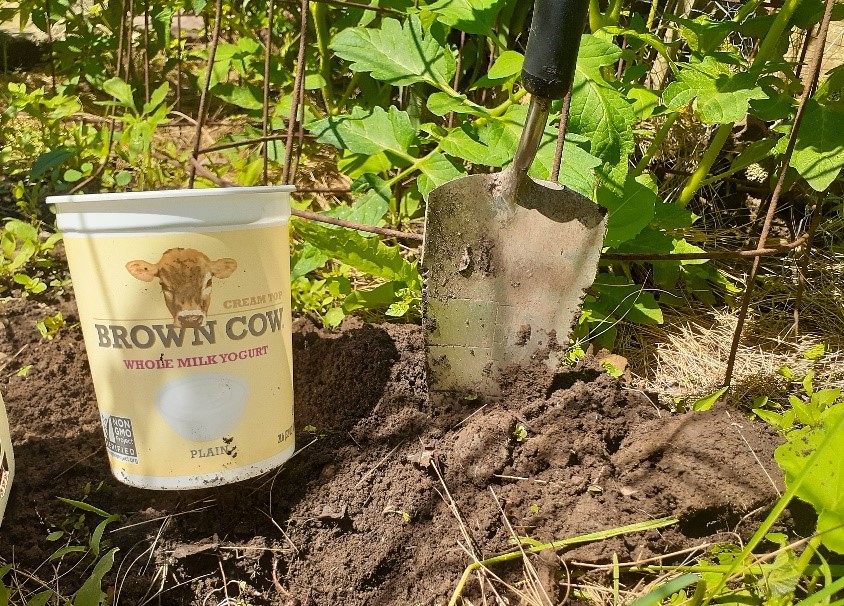
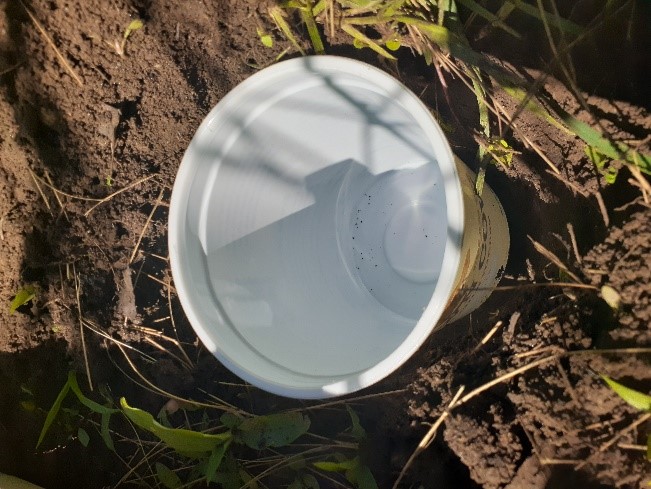
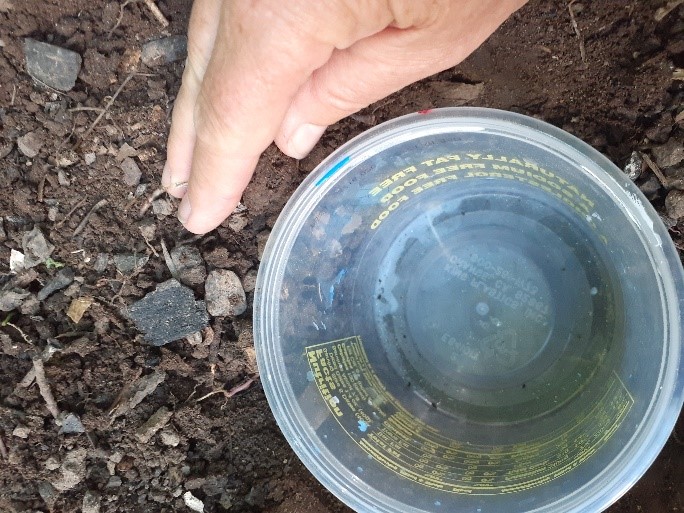
- Place your container in the hole and fill in dirt around it making sure the trap edge is level with the ground. Be careful not to allow too much dirt to fall into the container, but you may want to put a few dead leaves in for your captives to hide under.
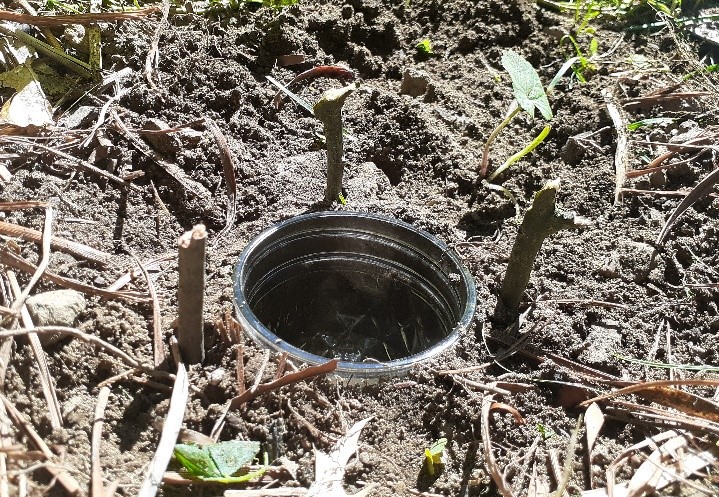
- Place your bait in the container to attract insects.
- Push 3 sticks into the ground around the trap so that their heights are even.
- Gently place the lid on the sticks.
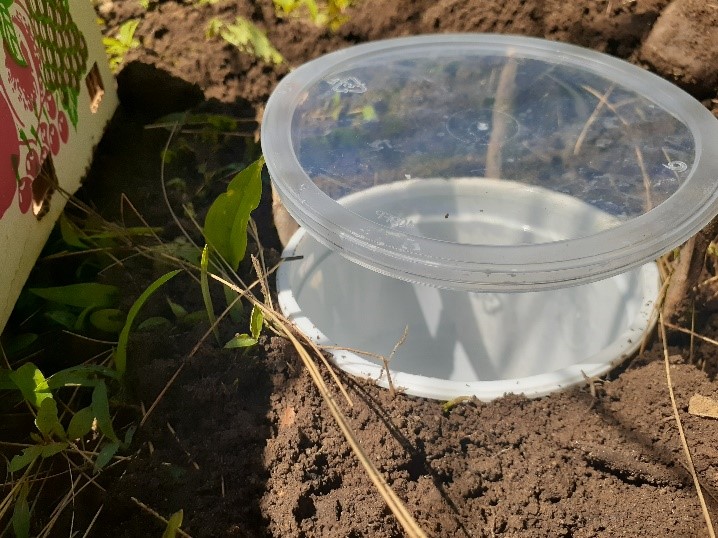
- Go away and record the location, weather conditions and type of bait used.
- Return to check you trap every few hours. Observe and record what you find. Draw what you see or take pictures to post on our Learning Community FB Page
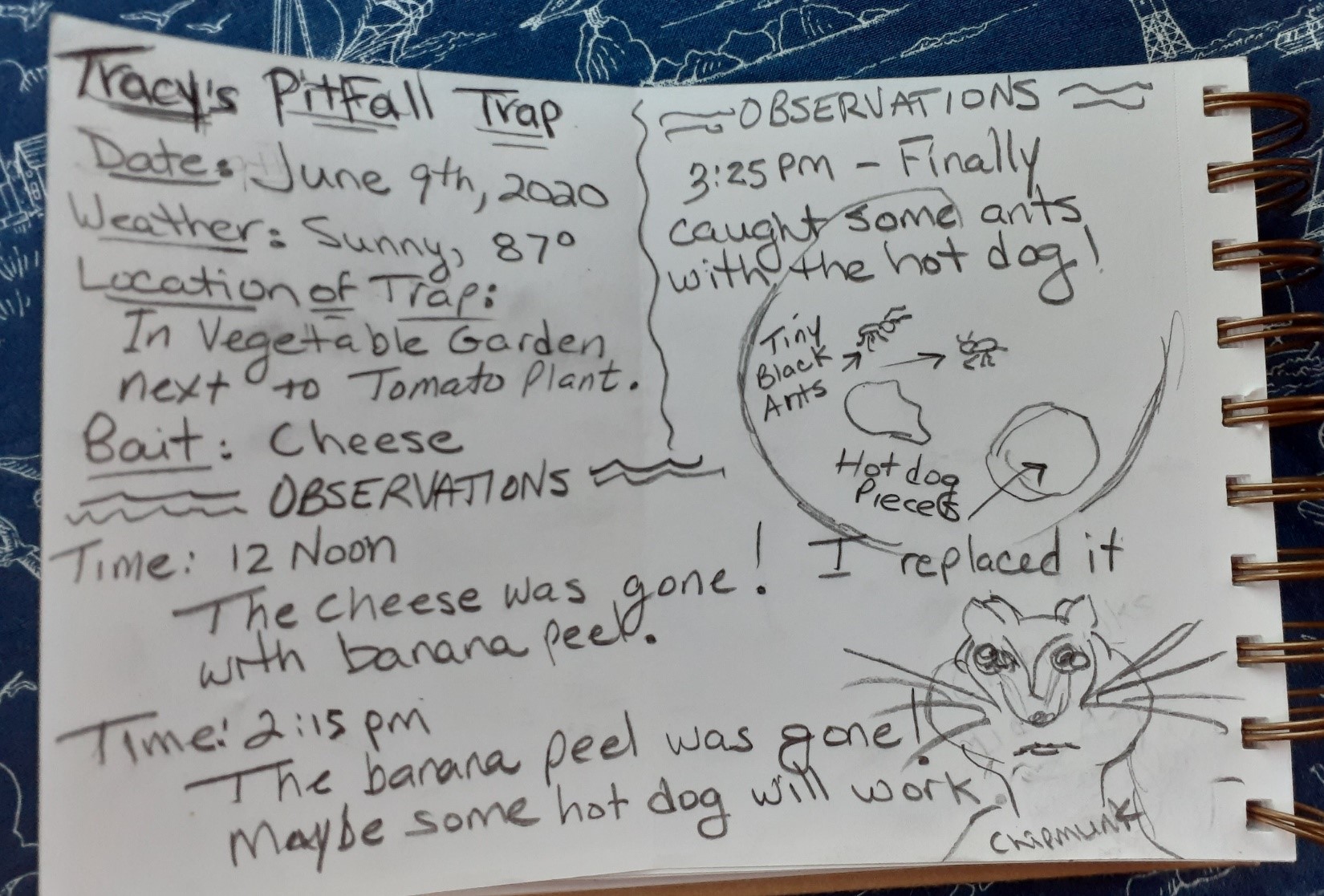
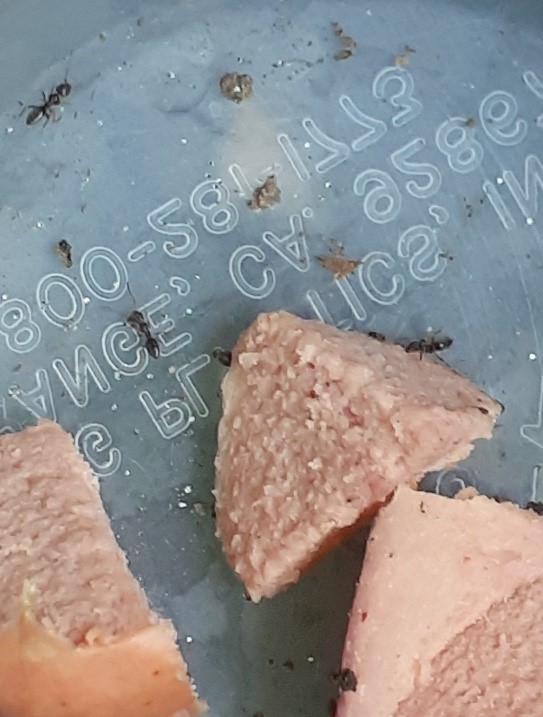
Ants liked hot dogs as bait
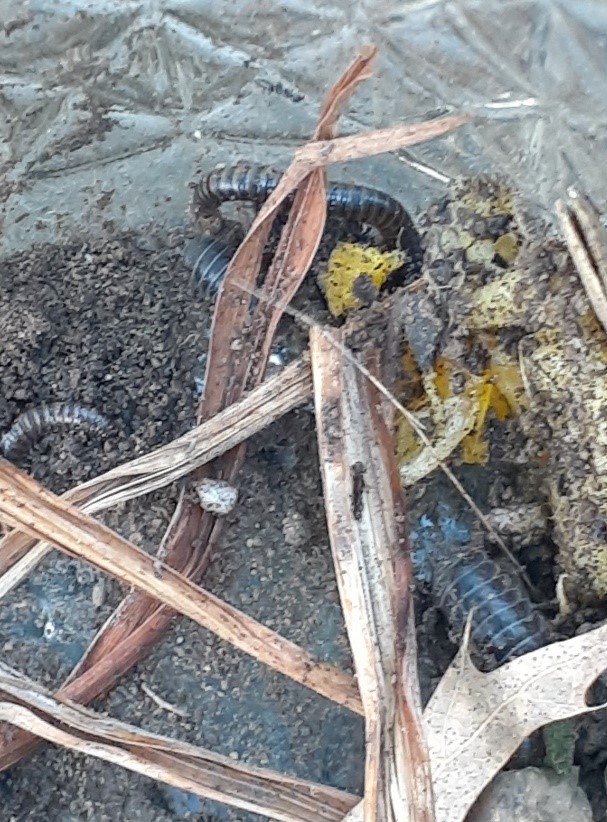
Sowbugs and Millipede
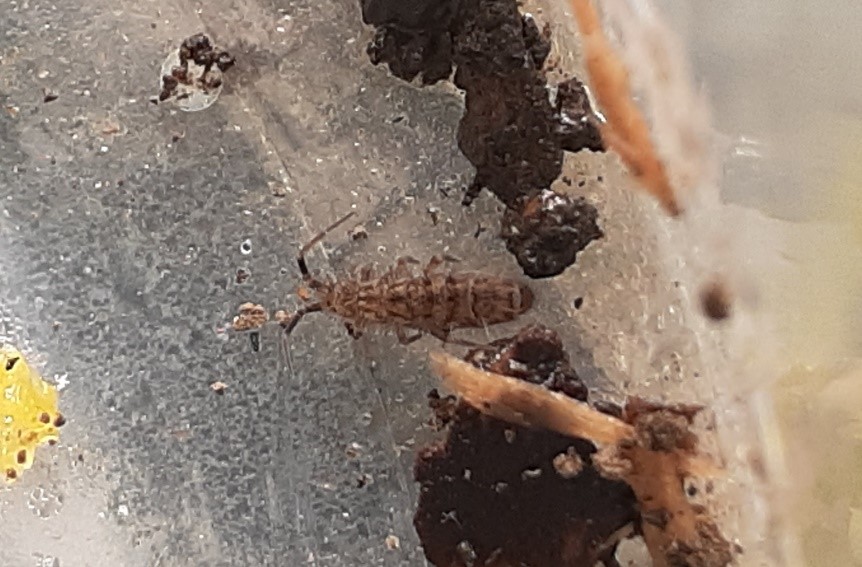
Springtail
- Always release your critters after observing them.
- Re-bait your trap using something different if you like. Come back again to see what other types of crawling invertebrates you’ve attracted.
- When you are done for the day, put away your trap for another time.
Wrap Up:
- Try leaving your trap overnight and check first thing in the morning. I had little luck during the day. My yard is overrun by chipmunks and they kept stealing the bait. They must be hungry.
- Might you catch different critters if you relocate your trap?
- Try setting your trap at different times of year: Spring, Summer and Fall.
Vocabulary:
Entomologist: A scientist who studies insects.
Invertebrates: An animal that does not have a back bone. Insects, snails, millipedes and worms are all invertebrates.
Sources:
https://www.nhm.ac.uk/discover/how-to-make-pitfall-trap-to-catch-insects.html
https://www.amentsoc.org/insects/glossary/terms/pitfall-trap
https://entomologytoday.org/2020/03/27/learning-at-home-with-bugs/
Wrap Up:
How did you like this activity? Please share any questions, comments, or photos that you and your child have on the Raritan Headwaters Learning Community Facebook Page!
More Raritan Headwaters Learning Resources



